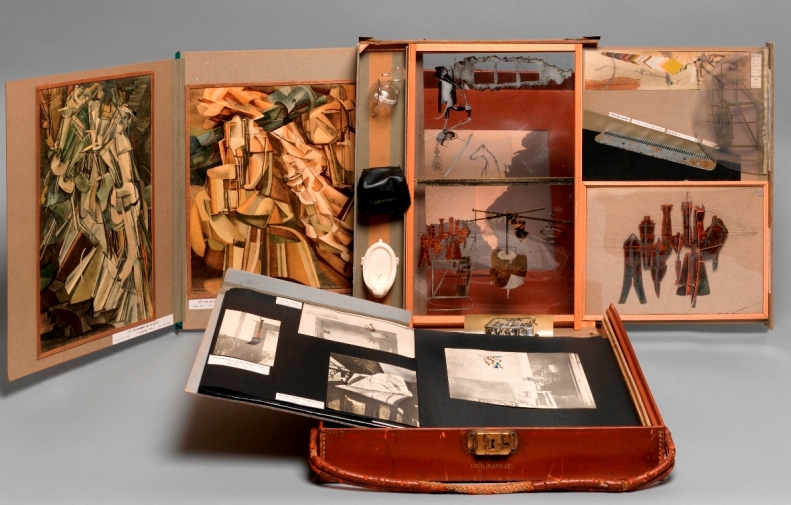A 50th birthday is a landmark occasion. One has plenty to look back on, whilst still having much to look forward to. Plus there’s all that life experience to draw on. What’s not to feel positive about? In the case of a gallery that’s built up a remarkable reputation as an innovative space for contemporary art outside London, sheer staying power is surely to be cheered and celebrated – "hear hear" for the next 50 years, and so forth.
But it’s also worth asking whether middle age hasn’t precipitated some kind of quiet crisis for Bristol's Arnolfini gallery. It’s not fair, of course, to judge on the basis of one exhibition, but one spies an identity wobble nonetheless. For why else does this independent, not-for-profit gallery, which is meant to champion all that is contemporary and now to a wider public, seem to be stuck in such a dusty conceptualist groove?
The current exhibition, Museum Show Part 1 (Part 2 follows next autumn), offers a historical overview of artists who have created their own fanciful miniature “museums”. These are artists who usually possess a hoarder’s obsessive mindset. They range from Marcel Duchamp to Susan Hiller to Marcel Broodsthaers and Peter Blake, with a number of lesser-known artists kicking us off. But instead of being fun and engaging - provocative and challenging, too, as the subject and the selection of artists surely demands – it is wilfully, obstinately obscure. There seems something quite deliberate but wholly misguided in this.
It would be really helpful to have some precise dates, but providing any kind of historical narrative seems to be an anathema to some curators
In part, there’s a simple reason for it. Nothing is labelled, and whilst pamphlets are provided, there is some confusion about which pamphlets refer to which work – as a critic I wasn’t alone in shuffling from one work to the next trying to identify the relevant artwork, whilst also trying to make connections that refused to be made because of a basic lack of curatorial guidance. What’s more, the pamphlets often contain little more than itemised lists in tiny print, accompanied by smudgy, badly printed pictures and, occasionally, a script by the artist. None of this is illuminating.
But it’s not just the frustrating, boredom-inducing information deficit. This is an extremely uneven exhibition, and whilst a coherent overview eventually emerges, not all the artists seem to fit within it. Tony Marioni, with his fridgeful of beers, for instance, or Stuart Brisley, with his so-called Museum of Ordure (a grimy, encrusted chair and a couple of newspaper cut-outs hanging on the wall), both seem to me like spare-ends occupying the third and final floor. Simply bringing two objects together seems to be a rather loose criterion for inclusion. But both these installations are ongoing projects, and by ignoring any purpose or meaning in a wider context one is left naturally baffled. This goes for a lot of the work.
Peter Blake is a natural choice here, since he is a hoarder and a collector extraordinaire. And the gallery could have shown any number of his Joseph Cornell-inspired wall cabinets and boxes. But instead it’s gone for one rather indifferent photo collage – a piece entitled Museum of Myself. This nostalgic homage of “things I like” features pictures of Bridget Bardot and Shirley Temple, a signed photo of Max Miller, a photograph of early Talking Heads and a reproduction of a Duchamp “rotary demisphere”, but it also happens to be among Blake’s least visually seductive works. Cornell might have made an enticing neighbour, but by now you’re wondering if the gallery has a policy against things that look good. Instead we have a Museum of Safety Gear for Small Animals, an array of dinky “safety suits”, by Bill Burns. There’s clearly a whiff of outsider art at play in this, but it’s executed with such a knowingness and try-hard whimsy that Burns’s piece frankly leaves me unmoved. As does any absurdist humour in Robert Filliou’s miniature art objects in Plexiglas.

Just one more thing about this “historical survey”– it would be really helpful to have some precise dates, but providing any kind of historical narrative seems to be an anathema to some curators, and to me, this always suggests a kind of curatorial arrogance.
Finally, there are three off-site projects, but by far the best and the most intriguing belongs to Spanish artist Asunción Molinos. She has transformed a former police station (just a 10-minute ride from the gallery) into a fully realised World Agriculture Museum (main picture), a work in which fact, fiction, Orwellian propaganda and counter-propaganda mingle in a brilliantly realised bureaucratic dystopia. GM crops, overpopulation, land scarcity and the politics of the food trade are all thoughtfully explored in ways that are, by turns, disturbing, amusing and disarmingly witty. What’s more, it hasn’t a whiff of preachiness about it. Amid all that is half-baked in the Museum Show, this is a genuinely provocative, engaging and memorable contribution.
- Museum Show Part 1 at Arnolfini, Bristol, until 19 November








![SEX MONEY RACE RELIGION [2016] by Gilbert and George. Installation shot of Gilbert & George 21ST CENTURY PICTURES Hayward Gallery](/sites/default/files/styles/thumbnail_125_x_125_/public/mastimages/Gilbert%20%26%20George_%2021ST%20CENTURY%20PICTURES.%20SEX%20MONEY%20RACE%20RELIGION%20%5B2016%5D.%20Photo_%20Mark%20Blower.%20Courtesy%20of%20the%20Gilbert%20%26%20George%20and%20the%20Hayward%20Gallery._0.jpg?itok=3oW-Y84i)





Add comment